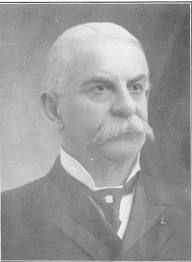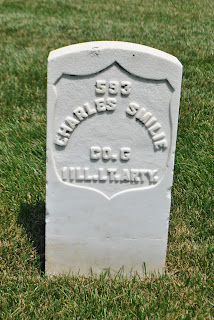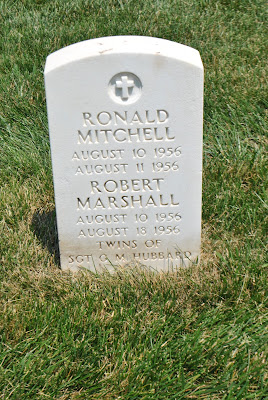The town -
We arrived at the Fort Scott historic military fort just in time to get on a bus that was going to take a tour of the town. They usually have a trolley, but on this day, the trolley was having some mechanical issues. That's okay. The bus was air-conditioned and it was rather warm.
Debbie Fry - I took these photos for you! The lady of the house likes quilts and there were wood quilt paintings attached to this house on all sides.
Two photos since a tree blocked "quilt"s in each photo.
Love this house! Quite unique!
Mostly the bus driver showed us the historic homes, although he also drove us to the park and the cemetery (which we were planning to drive to later - that's another post)


Yes, there is a suit of armour at the top of the front steps. Not sure what that is all about. This is a bed and breakfast. I would actually think it would be fun to stay in a B&B here and shop at the cute shops downtown. Not so much Al's cup of tea though. I'll have to go back some day.
The fort -
After we got back from our hour long tour, we walked to the fort.
The fort was established in 1842 and served to enforce peace between white settlers,native peoples like the Osage and the relocated Eastern tribes.

2nd story of this building served as a hospital.
There were skirmishes with Indians and also there were 3 political groups occupying Kansas - pro-slavers, free-staters and abolitionists. Conflict between these groups often turned violent. This era became known as "Bleeding Kansas".
"Wounds acquired often required surgery. Some patients who survived the physician's knife, died later from infections resulting from unsanitary procedures."
pharmacy
"Surgeons wore no gloves and used unsterile instruments. One surgeon is reported to have carefully sharpened his knife on his leather boot before operating. In threading the needle for stitches, it was customary to point the silk by wetting it with saliva and rolling it between the fingers."
"Infectious diseases spread quickly in closed rooms where the stench of unwashed bodies, fever, and gangrenous wounds could be overpowering."

Stables
Room for laundry women to wash the soldiers clothes
Officer's quarters - Housing for the captains and their families


Indoor potty converted to chair when not in use
A very small bathtub. Since the bedrooms are on the 3rd floor, the slaves would not have to climb up the stairs so many times to fill the tub.

Room for slaves or servants to cook and sleep
In March, 1845, a Captain Burdett accidentally shot and killed himself (although some say he must have killed himself)
Mrs. Terrett was described as being in wild and "violent grief", having just lost their one-month-old baby. I am sure that life in the west must have been very difficult in those days!
Some of the wives of the captains had flower gardens.
Supplies were costly and scarce
the well
when soldiers were found to be drunk or disobedient, some were made to sit on this rack, hands tied behind their backs. I am sure it would be hard to balance!
prison and ball and chains for those who deserved worse punishment
and hanging or shooting for those who committed treason
Fort Scott's military stores made it a target of the Confederates, who made two unsuccessful attempts to capture it during the war.
After the Civil war ended in 1865, the nation began to heal and to unify. Fort Scott played a significant role to help transform the United States from a young divided republic into a united and powerful transcontinental nation.












































































